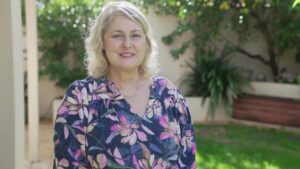
When Carolyn Groves received her diagnosis of advanced ovarian cancer, she was advised by a consultant to prepare for the worst. “Ovarian cancer is one of those diseases where you can feel totally normal until you drop dead,” the former nurse from Perth explained. She experienced only mild symptoms, such as constipation and urinary issues, before learning that her prognosis was grim, with expectations of survival extending only two years. This alarming reality reflects a broader trend, as ovarian cancer stands as the deadliest cancer for women worldwide, particularly in Australia.
The absence of an early detection test complicates matters, making ovarian cancer one of the most challenging and poorly understood cancers affecting Australian women. Statistics show that fewer than half of women diagnosed with this disease survive beyond five years. Recovery rates for ovarian cancer are notably lower than the average for all female cancers.
Economic and Social Burdens
A recent report by Deloitte Access Economics, in collaboration with pharmaceutical firm AbbVie, has illuminated the substantial economic and social burdens associated with ovarian cancer. The findings indicate that advancements in care and support for women living with this illness could significantly enhance their quality of life, allowing them to maintain vital roles within families and communities.
The report estimates that ovarian cancer costs the Australian health system approximately $270.9 million annually. The majority of these expenses are borne by public hospitals, the Pharmaceutical Benefits Scheme, and private healthcare providers. Additionally, many women experiencing treatment-related challenges reduce their workforce participation, leading to an annual loss of $42.5 million in labor productivity.
Groves, who dedicated much of her life to nursing, had to leave her beloved profession due to treatment side effects. Now in her 60s, she opted to sell her home and relocate further from the city to alleviate financial strain after her diagnosis in 2022. “I’m very lucky I’ve got good friends,” she shared. “They bring me food and pack my dishwasher on the days I can’t get out of bed.”
Challenges in Treatment
The treatment landscape for ovarian cancer is far from straightforward. As explained by Michelle Harrison, a medical oncologist at Chris O’Brien Lifehouse, each patient’s treatment plan must be tailored individually. “The chemotherapy we typically give involves drugs that cause hair loss, aching muscles, immunosuppression, and fatigue,” Harrison noted. “It is absolutely devastating to be diagnosed with cancer because patients go from a seemingly normal life to being very aware of their mortality very quickly.”
The report emphasizes the urgent need for increased investment in research focused on identifying risk factors associated with ovarian cancer. It also calls for the development of early detection methods, improved equity in clinical trial recruitment, and enhanced supportive care programs.
Despite the obstacles, Groves finds strength in the support of her close friends and her two adult sons. She reflects on her emotional journey, allowing herself brief moments of frustration and sadness. “I allow myself five to 10 minutes a day to be grumpy and cry about things,” she said. “There’s no use getting overly upset about it. The time you spend being upset is wasted.”
As the conversation around ovarian cancer continues to grow, the hope for better treatment options and support for those impacted remains a critical focus for healthcare professionals and advocates alike.







